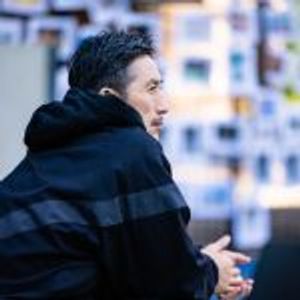Cyanotype, invented in the 19th century, is a photographic printing process that produces blue photos. The graphic elements of a photograph determine the quality of the final image. Meaning, minimalist pictures are what create a poetic sentiment. The combination of skateboard movements, unique and beyond one’s imagination, and the unpredictable blue hues of cyanotype is a perfect match. An unprecedented vision of skate photography was born through an old technique.
Kevin Metallier is a photojournalist who glides on beautiful waves with his long, blonde hair in the wind. He’s one of the people who was drawn to cyanotype photography. Like Rick Howard, Kevin is tall and has reliable hands and legs; he uses them to ride his skateboard and take pictures. As opposed to his meticulousness, his texts are like a rugged dirt road. Rather than his work being a passive creation/artwork, it makes more sense to view it as the work of a hands-on person. Kevin, whose gorgeous photos contrast with his demeanor (although it might be rude of me to say this, it’s coming from someone who knows him), revived the time-consuming and intricate cyanotype. I’d like to introduce Kevin Metallier to you.

© Kevin Metallier
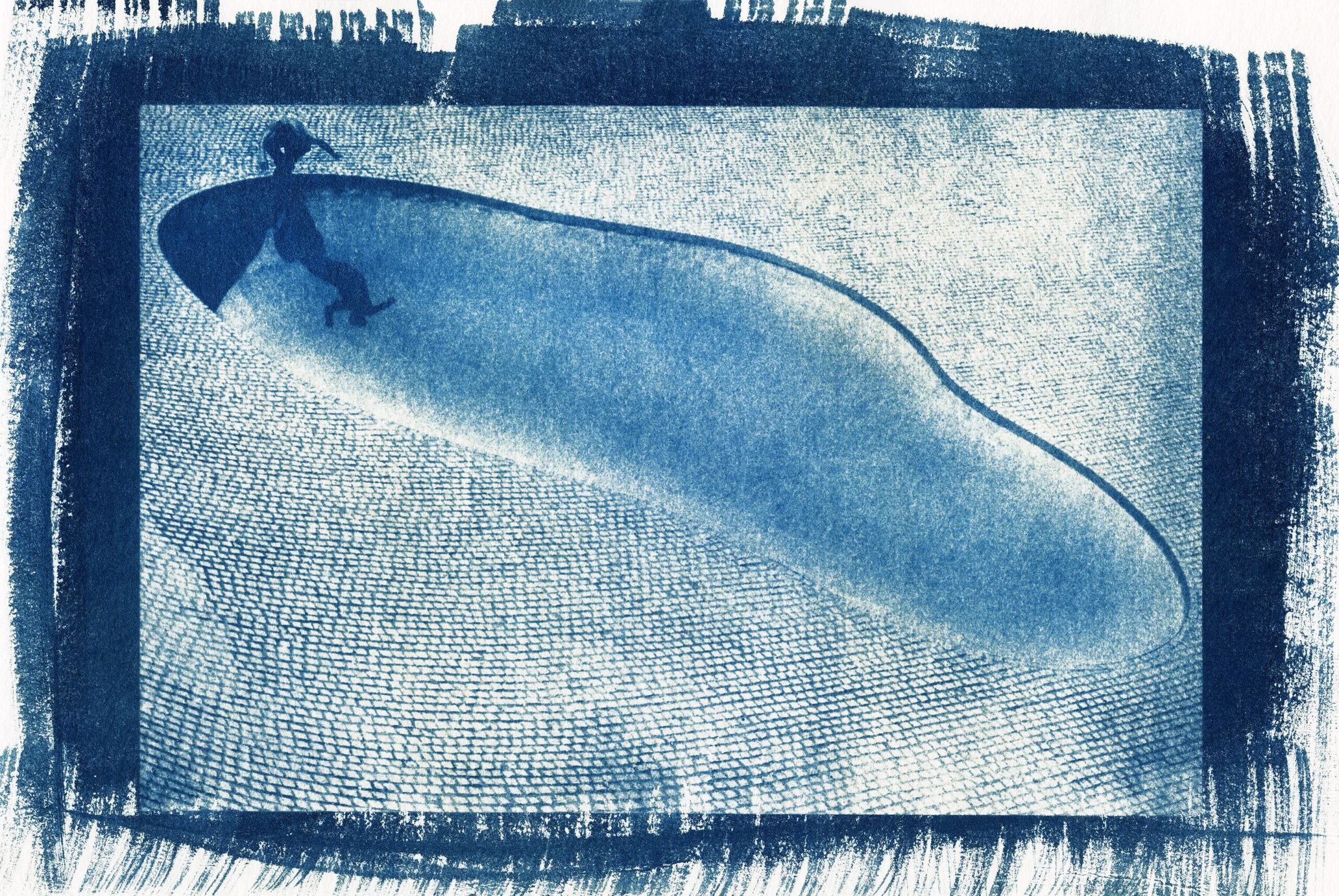

© Kevin Metallier
Learning something new from old things
The Japanese proverb, onkochishin (温故知新), which means to come up with new ideas by studying the past, applies to Kevin’s current photographic endeavors.
The technology of photography was born in 1839 at the height of the industrial revolution in England. Three years later, in 1842, a new printing process was created. And that was the cyanotype.
I remember meeting Kevin for the first time a decade ago. He was in Japan, commissioned by a European skate magazine, and he came to me out of the blue to tell me he wanted to interview me. Kevin was interested in how I ran a skate magazine on an island nation in the far east. If I’m not mistaken, he carried a heavy-looking camera bag and a digital SLR camera on his shoulder. We talked and laughed a lot and warmed up to each other quickly. I liked his character and vibe.


© Kevin Metallier
Later on, I ran a feature on Kevin in Sb Skateboard Journal, which is still in print today, using the photos he had taken on his travels across the globe. His photos then were in color and had a high contrast. They were sharper than they were soft, and the visual quality looked good on the page. Although his printing and photographic process has changed, he has always liked horizontal photos. He became entranced with cyanotype, the legacy of the 19th century.

© Kevin Metallier
Skateboards didn’t exist in the 19th century. Surfboards, however, might’ve originated from Kamehameha’s people in Hawaii. The subjects at the time were most likely aristocrats, churches, and rural landscapes. Kevin introduced a new concept, skating and surfing, to this traditional process. He takes striking, minimal photos, then develops the negatives in a darkroom to create blue images whenever he has the time. It seems like it’s beyond fun. I wondered if there is a particular reason why he got into this printing process, but apparently, there isn’t one.
For 25 years, since Kevin started taking photos, he has stayed in a darkroom to experiment with different developing techniques. In a sense, he disliked the world of megapixels. Modes of expression like the cyanotype, with its minimal information and subject matter, spoke to him. For him, it’s fun to redo a photo over and over until he produces a satisfactory one. It’s not as simple as taking a picture and calling it a day. It’s an arduous, backbreaking task. Kevin enjoys his errors, as eventually, a radiant blue shade emerges from a piece of printing paper. This precise moment brings him immense joy. He’s a freak, in a good way. Doing fastidious work means the goal is distant, but to reach that goal is to gain a tremendous feeling. It’s true; his blue skate photos are one of a kind.
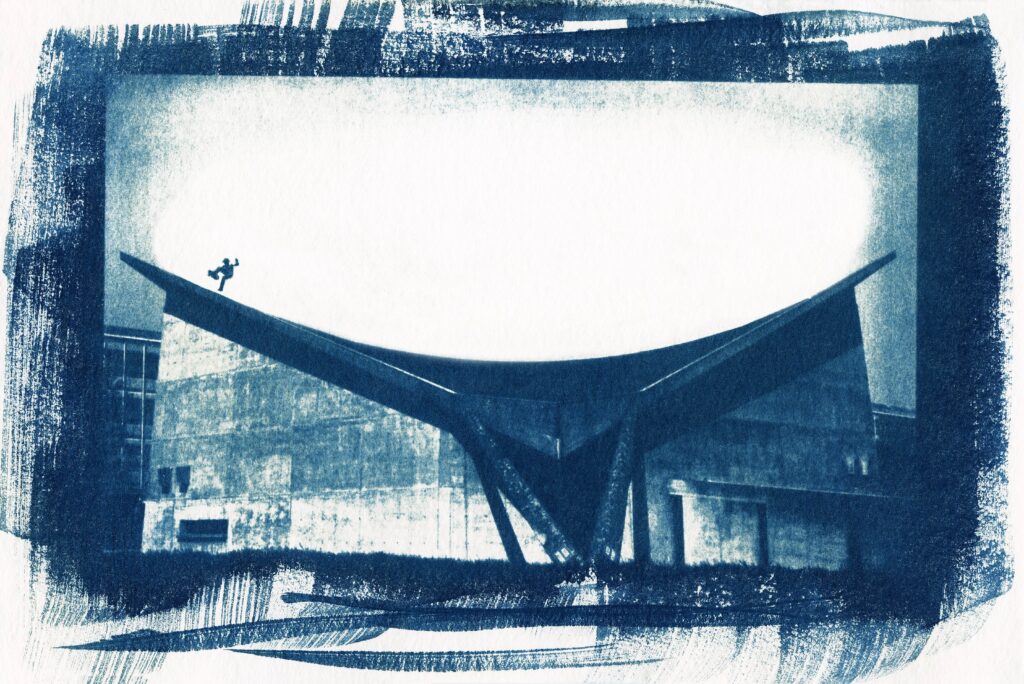
© Kevin Metallier
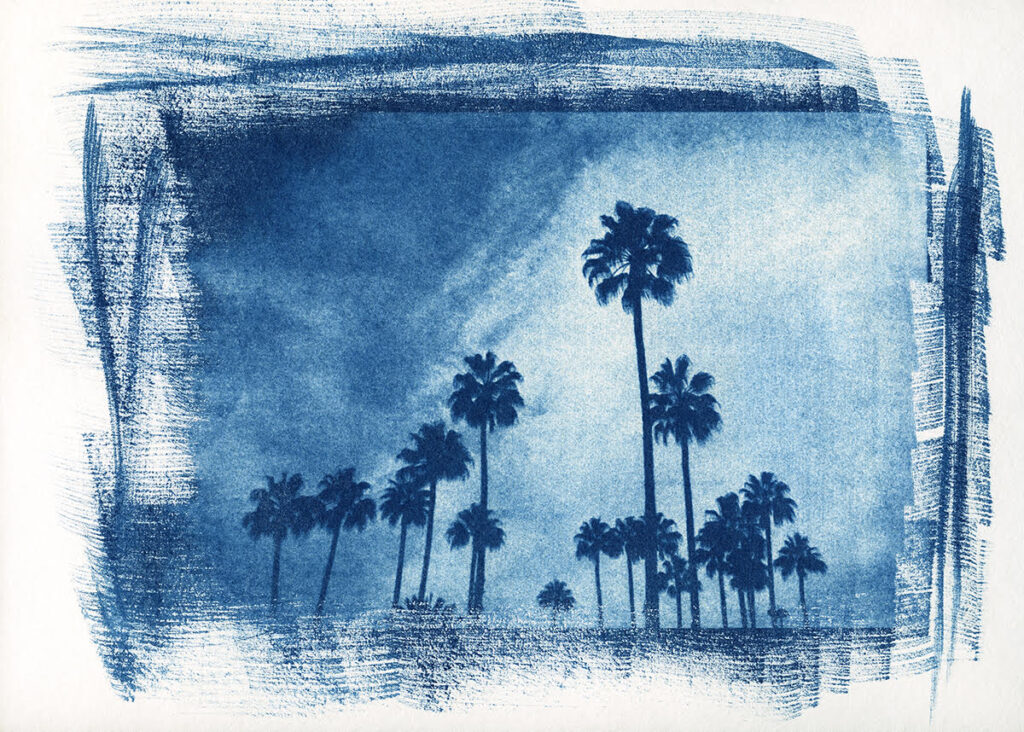
© Kevin Metallier
Kevin; a rough guy who’s up for anything at first glance
I asked Kevin about the shade of blue that cyanotype produces. His response was quite romantic:
“Men will always be fascinated with the deep shade of blue. It evokes a desire for purity and a thirst for nature.”
He quoted a line from an old writer and continued:
“The color blue is part of the ocean and sky, and it arouses the notion of traveling and freshness. Further, wisdom and depth are synonyms. The many shades of blue are the soul and essence of cyanotype.”
It seems like I can’t let go of my first impression of meeting Kevin. He was tall and had an aggressive code of behavior and communication ability. Appropriate for a man who was into skating and surfing, he had a habit of picking at his long hair. His texts in English looked like they were translated from French via Google Translate. And yet, his photos were beautiful. His rough wildness was alluring.
He’s obsessed with the ravine of cyanotype, a strenuous yet minimal thing that only a portion of people know about; I loved how his demeanor and obsession didn’t match. Additionally, he did the unexpected by documenting skating, a relatively new culture, with an old, classic printing process.
From Hasselblad’s ultra-wide-angle fish eye lens to panoramic lens. Daylight sync using radio slaves. The endless sequence of switching from a negative film to a digital format. And then comes the retouching stage. Various techniques have been invented in skate photography, but Kevin’s the only person to use the onkochishin cyanotype technique. Even within skating, with its transient and dynamic adaptability, what he’s accomplished is big. Forgive me, Kevin. You’re not just any rough guy. You’re a photographer who’s exceptionally mad about their craft. I’m honored I get to introduce your blue photographs like this.

© Kevin Metallier
Not skating nor surfing
Kevin has traveled all over the world. He’s continued to bring his board and camera in places with wild waves and seek skate spots on the streets. It’s no wonder his photos have been featured in European skate and surf magazines. He’s sort of similar to the traveling surf journalist in In God’s Hands, the film that gained attention because it stars professional surfer Shane Dorian. Although this is another side of Kevin, I wanted to talk about his cyanotype photos, which show his craftsmanship.
His other images are brilliant, too, such as his shots of women.

© Kevin Metallier
This type of photography differs from skate photography, where the important thing is to focus on one point. It’s also different from his poetic, stripped-back cyanotype photos. I’ve yet to work with Kevin using this style, but I hope to work on a feature with him someday.
I have no intention of stating I know everything about each photographer I’ve spoken about in my series of columns. It’s impossible. However, I can say I’ve seen common factors among such photographers in my years of interacting with them.
For example, they take skate photos, love analog film and traveling deeply, and usually live in a city with concrete and marble floors. In contrast, not only does Kevin take skate photos, but he also goes into the water to take surf photos (he must drastically adjust the camera settings to do so). Rather than the big city, he lives in an idyllic seaside town, away from the metropolis. Perhaps those subtleties are what make Kevin special to me. It might sound like it’s nothing extraordinary, but I’m reminded of Fio Piccolo’s line in the film, Porco Rosso:
“I have grown up with a lot of stories about the pilots since I was a small child. My grandpa always told me that no one is as nice as the pilots. It’s because [the] sea and sky purify their hearts. Hence, the pilots are much braver than the sailors, and more proud than the ordinary pilots.”
The boss of the Mamma Aiuto sky pirates nods dramatically, while I picture Kevin and nod along. He’s well-versed in both the streets (blue skies) and the beach (blue ocean). He’s able to produce blue shades because he explores both fields and takes photos. That’s why Kevin Metallier’s cyanotype photos are interesting.
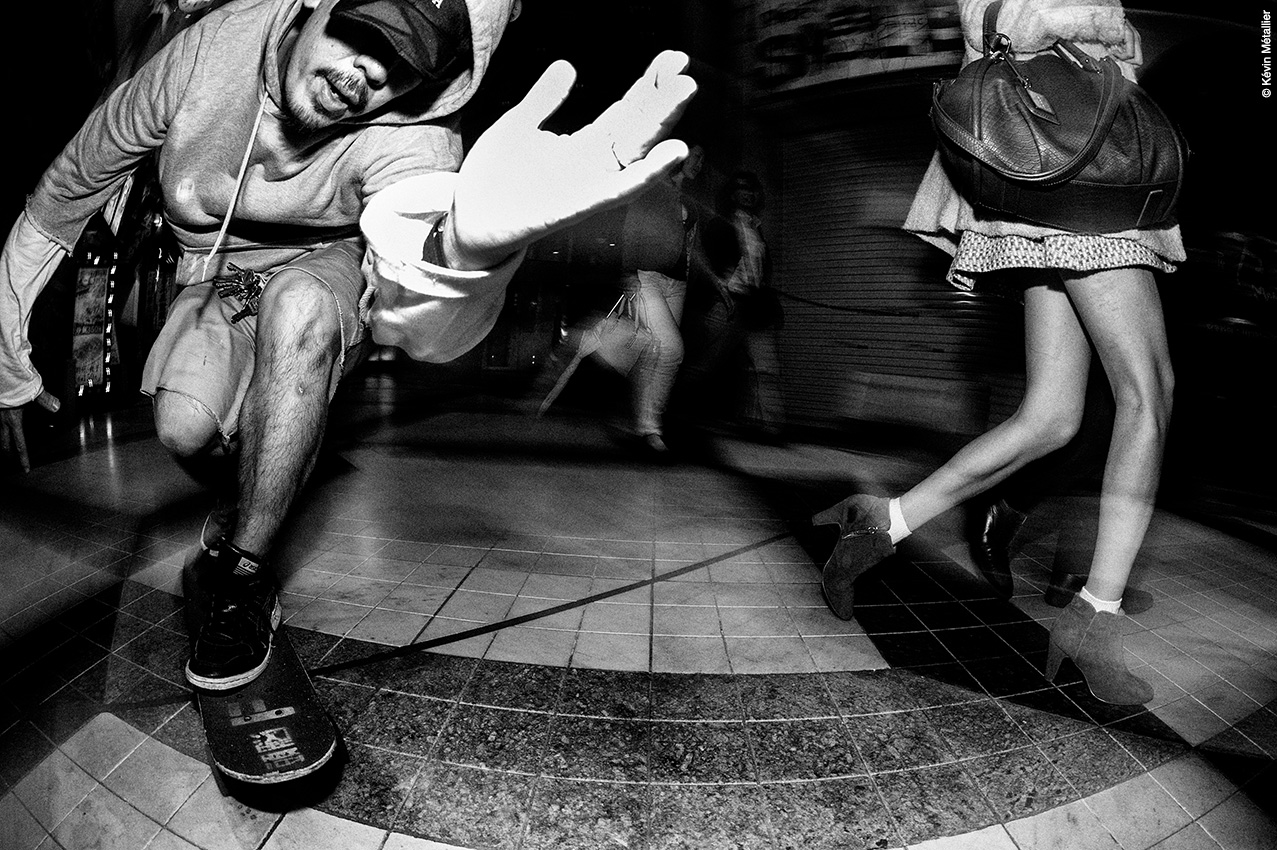
© Kevin Metallier
Kevin Metallier
A skate and surf photojournalist who’s been traveling the world for over 15 years. Kevin Metallier is based in Biarritz, a gorgeous town in Basque, the south of France. Famously, noble European aristocrats would go on holiday there in the 19th century. Today, it’s known as the best surf spot in Europe. When he’s not traveling, Kevin locks himself up in a darkroom and immerses himself in developing photos of skating and surfing via cyanotype, a printing process made in the 19th century.
https://www.kevinmetallier.com/
Instagram:@kevinmetallier

